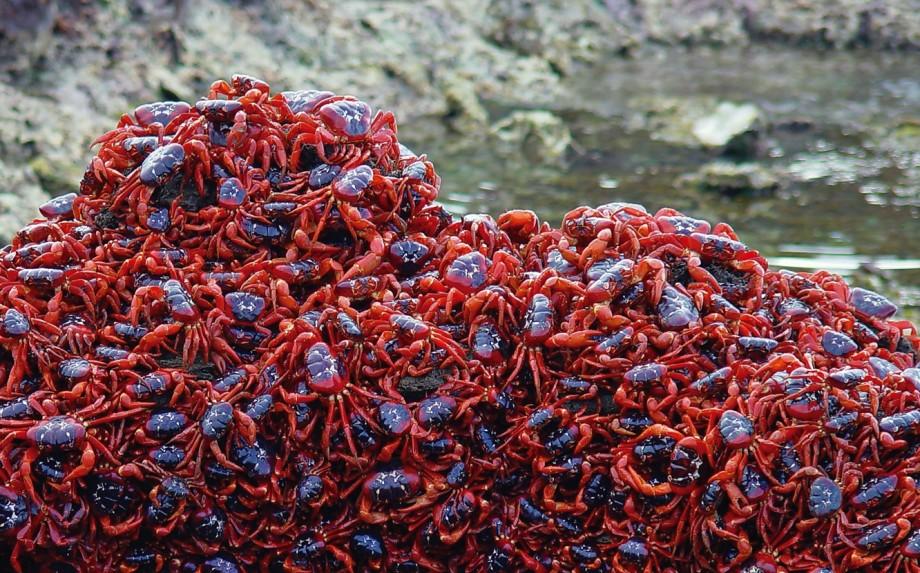Christmas Island's Annual Crawling Carpet of Crabs

Red crab migration, Christmas Island National Park. Photo: Max Orchard, Parks Australia
Atlas Obscura on Slate is a new travel blog. Like us on Facebook, Tumblr, or follow us on Twitter @atlasobscura.
Christmas Island, an Australian territory in the middle of the Indian Ocean, is populated by 1,500 humans and 100 million crabs.
Each October, the ground becomes a moving red carpet as tens of millions of endemic red crabs leave their forest burrows and scuttle to the shore in order to spawn. During their perilous journey, which can take several weeks, the crabs must cross roads, withstand seaside winds, and stay out of the way of yellow crazy ants.
The ants, who, true to their name, move frantically and erratically when disturbed, were accidentally introduced to Christmas Island in the 1920s. Since then they have formed super-colonies, wreaking havoc on the island's ecosystem. Red crabs, despite being much larger and possessing an exoskeleton, are no match for the jets of lethal formic acid that swarms of ants spray into the crabs' eyes. Thousands of crabs die this way every year.
Concerned at the ants’ destructive effect on red crabs and Christmas Island ecology as a whole, the Australian government has established a seven-member Crazy Ant Scientific Advisory Panel. Tactics thus far include a four-year research study into the ants’ reliance on honeydew, and the 2009 release of 13 tons of insecticide on super-colony areas. Though this last measure made a significant dent in the crazy ant populace, their numbers are rapidly increasing once again.
Crowds of Creatures:
View Christmas Island National Park in a larger map
